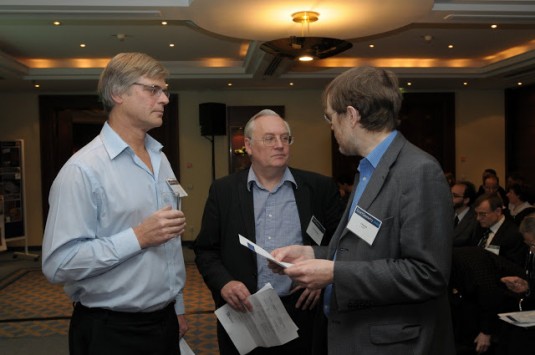Smart Geometry co-founder says architecture has barely scratched the surface of what computers can do.
It has been 10 years since a group of architects in London banded together to study and promote the idea of computational geometry, the use of algorithms, scripts, and data for parametric design, as opposed to strictly drawing and modeling in CAD. Today the professional organization they started, Smart Geometry, conducts an annual workshop and conference that draws hundreds of architectural practitioners and academics, primarily underwritten by Bentley Systems.

Co-founder Lars Hesselgren is director of research at PLP Architects of London and a Smart Geometry board member. GraphicSpeak sat down with Hesselgren during the event at The Bartlett, the college of architecture and built environment studies at University College London. Surrounded by Smart Geometry teams working on research demonstration projects, we discussed how computation has changed architecture. The following is an edited transcript of our discussion.
GraphicSpeak (GS): What has Smart Geometry accomplished in the ten years since you and your friends got things started?
Lars Hesselgren (LH): When we started, we were all practicing architects who wanted to see the use of computational methods in architecture get both professional and educational recognition. Today most of the large architectural firms in the world have a computational geometry team, by whatever name they call it. Many have teams doing original programming to support their design efforts. Professionals and students who are accepted and participate in the Smart Geometry conference can add it to their CV; it is a recognized achievement.
GS: What’s next for for the organization? What does the industry need you to do next?
LH: Today Smart Geometry as an organization has moved from advocating computational geometry to becoming a leading experimental organization. The digital world is changing our outlook on everything, including architecture. We need to think about the computer as a design companion, not a drafting machine.

GS: How does the computer become a design companion?
LH: We used to think in terms of a few design alternatives for a project. But now, with tools for site analysis, energy use analysis, lighting studies, and all the rest, we do a disservice to the client if we don’t fully explore alternatives. I think the day is coming soon when a client will expect, or even demand, that a million design alternatives have been conducted. The computation power is available, either as a cloud resource or in a dedicated high-performance computer facility. But the software for it is lacking. My personal next focus, one I am sure will also be part of Smart Geometry in future years, is cross-discipline research. Architecture needs to borrow from intelligent systems. We need to move from raw physics for things like site analysis to clever physics. We need the intelligent use of energy, materials, and light. I’m working with a nano-technologist, and our ideas stretch to transport and behavior. All this research, and much more like it, will change how we design cities.
Another way we can use smart systems involves a more fundamental idea, the purpose of a building. What is a building for? It is for creating a shirt-sleeve environment. Today architecture plans a system for heating and cooling the building. New thinking says, don’t heat and cool the building, heat and cool the person. Turning things upside down like that can drive people batty, but it is a good way to harness the power of intelligent systems.
GS: You said the software is lacking. What is needed?
LH: The software to do all this is coming along very slowly, 10-15 years behind our ideas. The explosion of the personal and mobile in computing is fascinating, and it is accelerating the rate of change in our industry. CAD vendors are struggling to react to mobile. Software needs to be accessible and powerful at the same time.
GS: Will the day come when the software is so powerful it replaces the architect?
LH: Professionals exist because of insurance liability, a necessary evil that holds back new ideas and methods. The construction industry is still far far behind in its use of technology. Fragmentation thwarts investment in intelligent design. The plumber knows nothing about BIM, but when the data the plumber seeks goes to the smartphone, that becomes an interesting proposition. We can get rid of the drawing. But we will never get rid of the professionals, from the architects to the building trades.





